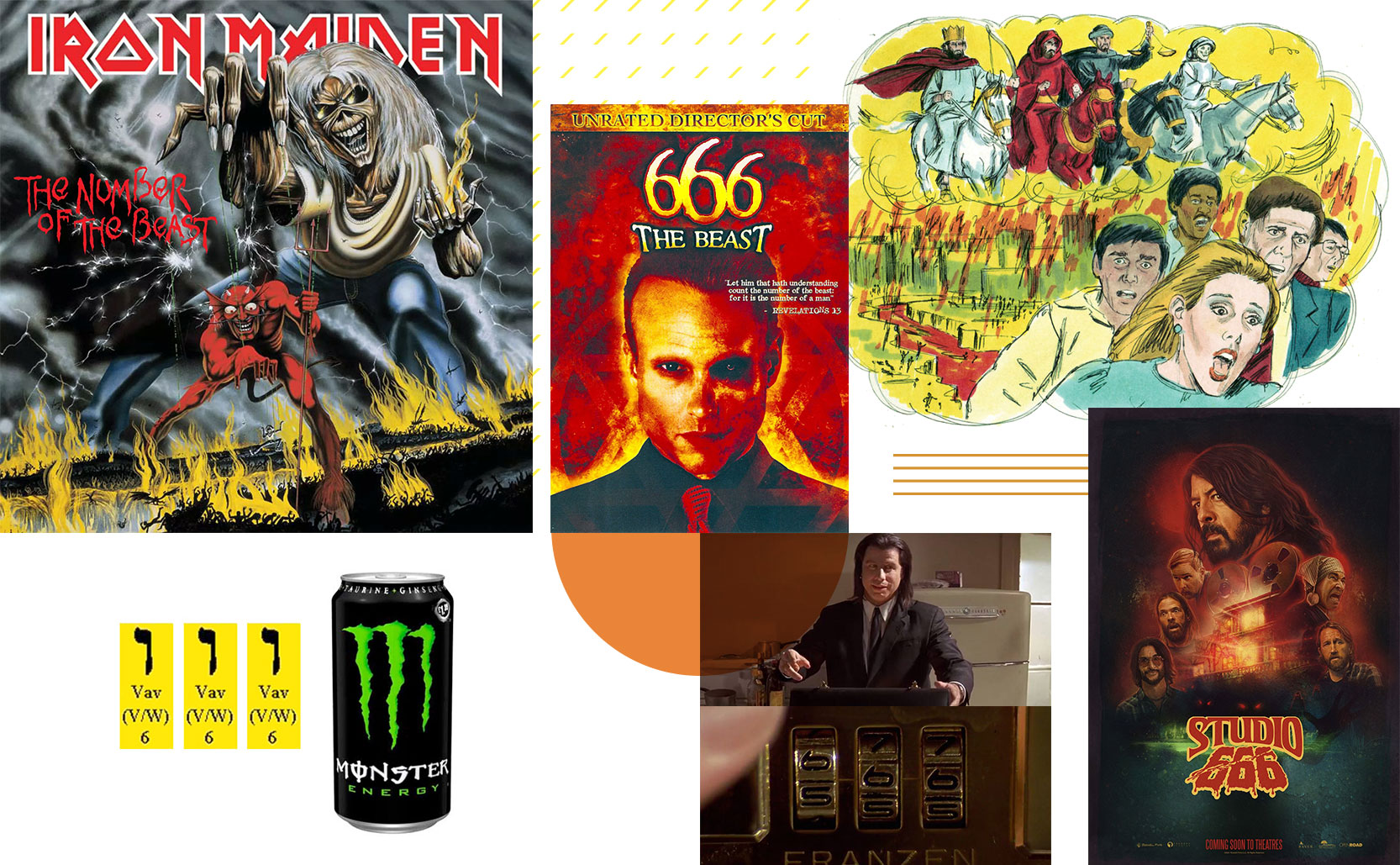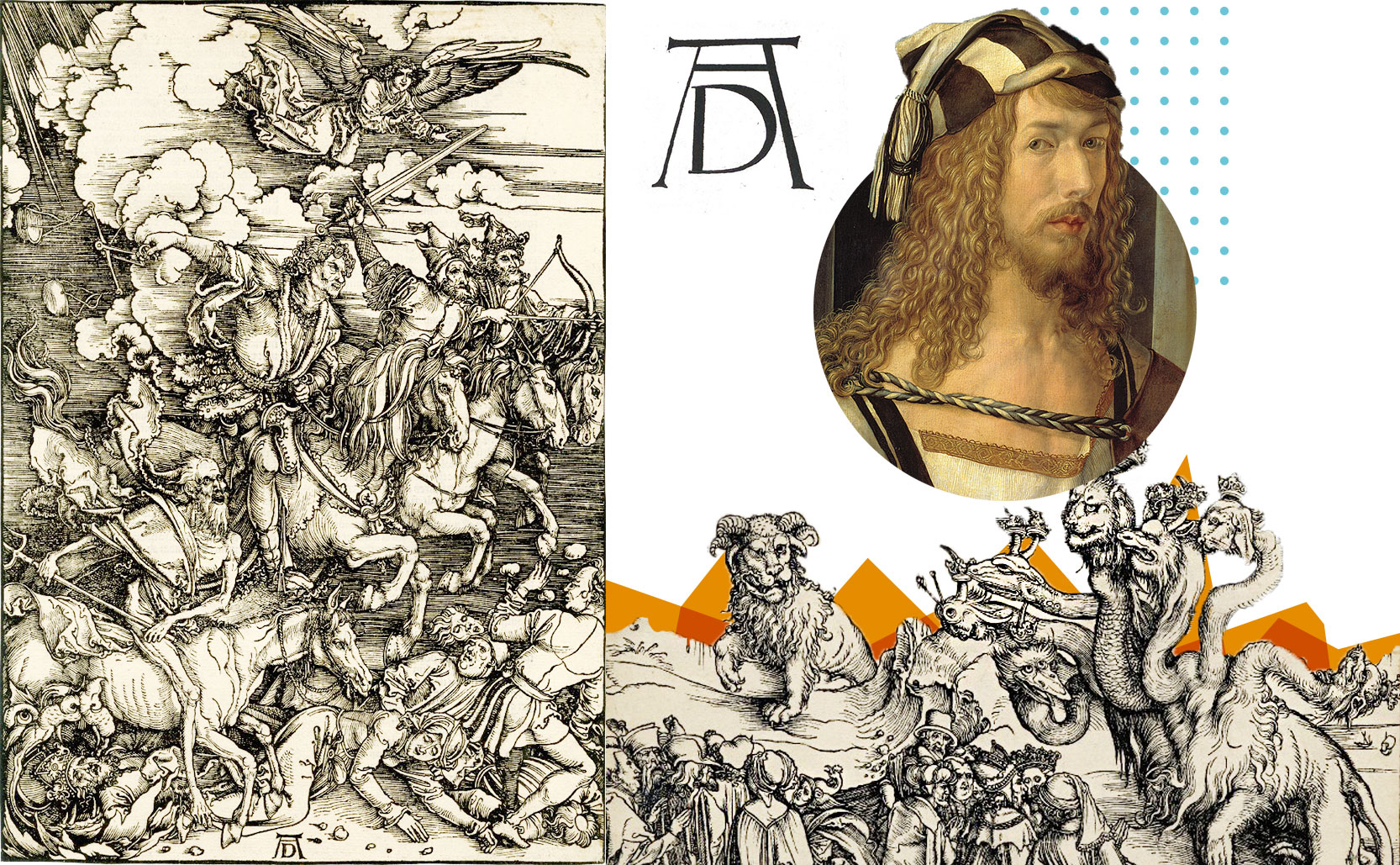the Number of the Beast
Depending on your translation (and your agenda), the number associated with the “beast” changes.
In the Book of Revelation, the final book of the Bible, John the Evangelist (or possibly someone else) describes an apocalyptic vision of the end times culminating in the second coming of Jesus. There are trumpets, fire mixed with blood being hurled to earth, the four horsemen, the Whore of Babylon drinking from a golden cup, piles of corpses, a seven-headed dragon – the stuff of nightmares and/or a metal album. However, in a book of memorable ideas one stands out: the beast.
As is typical in the Book of Revelation it isn’t exactly clear who or what the beast is. There is the beast with ten horns that rises from the sea, but there is also the beast of two horns that speaks like a dragon (known as the “false prophet”) which comes out of the earth. At some point in the future the two beasts as well as the seven-headed dragon join forces to to fight the armies of heaven, a battle that they lose, and as punishment are thrown into the lake of fire for eternity. Before this happens though John tells us that we will know the beast when it arrives because it will be identified by a number.
666 … or 616, it depends
Most early copies of the Book of Revelation say the number of the beast is 666, but because of different translations and discrepancies the number 616 has been a viable alternative since as early as the 2nd century CE. Today most Bibles have the number of the beast as 666. That said in 2005 Papyrus 115 was discovered in Egypt which is the oldest known copied portion of the Book of Revelation. This torn fragment of papyrus has the number of the beast as 616.
The number of the beast is frequently associated with the antichrist but nowhere in Revelation is “antichrist” written. The term antichrist typically means “heretic” or “false prophet”, but is also sometimes used as a more general term for an especially evil person (which the beast would certainly would qualify as). It’s through this general idea that the number of the beast enters pop culture as the spooky number of evil.

So it’s a number … or a person
The Book of Revelation is perhaps the most unusual book of the Bible, and not just because of the end of world visions. Unlike the rest of the Bible it offers no moral lesson and is the only book that values wealth and possessions. But most importantly the Book of Revelation is written in metaphors and symbolism – very little should be taken at face value. As such the number of the beast isn’t a number at all.


In ancient Greek and Hebrew every letter had a corresponding number. The letters used to write 666 as well as 616 could both (through some generous math) be used to write variations of the name Nero Caesar – the first Roman emperor to persecute the Christians and the most likely candidate at the time to be associated with evil. Like any book, the Book of Revelation was a product of its time. It would have been dangerous to write Nero’s name outright so writing it in code to an audience who would have understood how to read these numbers would have been safer for both the author and the reader.
Past, Present, Future
Typically the Book of Revelation is thought of as a vision of things to come, of future destruction, but it wasn’t always that way. For hundreds of years Revelation was interpreted as a book about the recent past with words of encouragement for the near future. John lived through the Roman sacking of Jerusalem in 70 CE which decimated the Jews (as well as early Christians, who still saw themselves as Jews). In 1st century CE the return of Jesus to save the Jews from the enemy would have been a very relevant message. The Book of Revelation was read as confirmation to an early Christian reader that they were on the side of good, that punishment was coming to those who deserved it, and that there would be a new Jerusalem. Instead of doom & gloom the Book of Revelation was a message of hope.
If the evil John wrote about was Nero and the Roman Empire, and as the Romans eventually became Catholics, then John’s vision failed to play out as foretold. Christians had to reconcile this failure and so they looked to the future. The Book of Revelation was reinterpreted to represent things still to come. Therefore, various historical figures over the millennia have been said to be “the beast” including the pope, Muhammad, Napoleon Bonaparte, Adolf Hitler, John F. Kennedy, Ronald Reagan, etc – forever moving the beast goal posts as society’s enemies change with the times.
Added info: The numbers on a roulette wheel add up to 666. Because of his association with the roulette wheel, gambling / entertainment impresario François Blanc was said to have made a deal with the devil. Also, the combination to the briefcase in Pulp Fiction is 666.
Courting controversy, Iron Maiden’s third album was 1982’s The Number of the Beast, from which the title track is one of the band’s most popular songs. The song The Number of the Beast opens with a spoken word reading from the Book of Revelation. The band wanted Vincent Price to do the reading but he wouldn’t do it for less than £25,000 so they hired English actor Barry Clayton instead.


